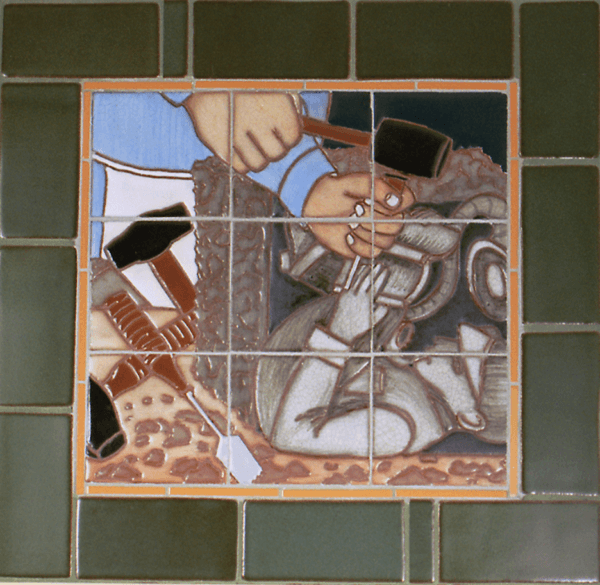Quarry Worker

The Margerum and McCarthy Quarries were located in the vibrant Jugtown district of Princeton. These quarries “were operated as a source of building stone and, in winter, ice, until at least 1906.” Consisting of mostly of a sedimentary rock called lockatong argillite, known as “Princeton Stone,” materials from Margerum’s Quarry wasere used in the construction of multiple buildings on Princeton University’s campus including a dormitory and Foulke, Henry and Pyne Halls. It is also said that, when being built in 1756, Nassau Hall was built of sandstone from a nearby quarry.
After their closure and once they were filled with groundwater, local residents would swim in the summer and ice skate in the winter. The area later became Quarry Park, a recreation area with a playground and dog park.
Resources for Further Research:
- Historical Industries Laid the Groundwork for Today’s Recreational Enjoyment by Eve Mandel (Princeton Perspectives)
- Queenston: The Bygone Hamlet with a Colorful Past and Charming Presence by Wendy Greenberg (Princeton Magazine)
- Building a Community: Italian Americans of Princeton September 12, 1993 – June 12, 1994, a past exhibit from The Historical Society of Princeton
- National Register of Historic Places
- “Margerum’s Quarry” record search (The Historical Society of Princeton)
- “Queenston” (The Historical Society of West Windsor)
- Articles from the Papers of Princeton database:
- Stephen Margerum, Retiring Postmaster, Recalls a Lifetime’s Memories of Princeton (Princeton Herald, 1949)
- Student Researches Jugtown Quarries (Princeton Recollector, 1975)
- Jugtown Boasts A Proud Tradition (Princeton Recollector, 1976)
- Jugtown/Queenston: Jugtown Historic District Princeton’s 18th Century Crossroads Village by Clifford Zink and Old Princeton’s Neighbors from the Princeton Public Library’s collection